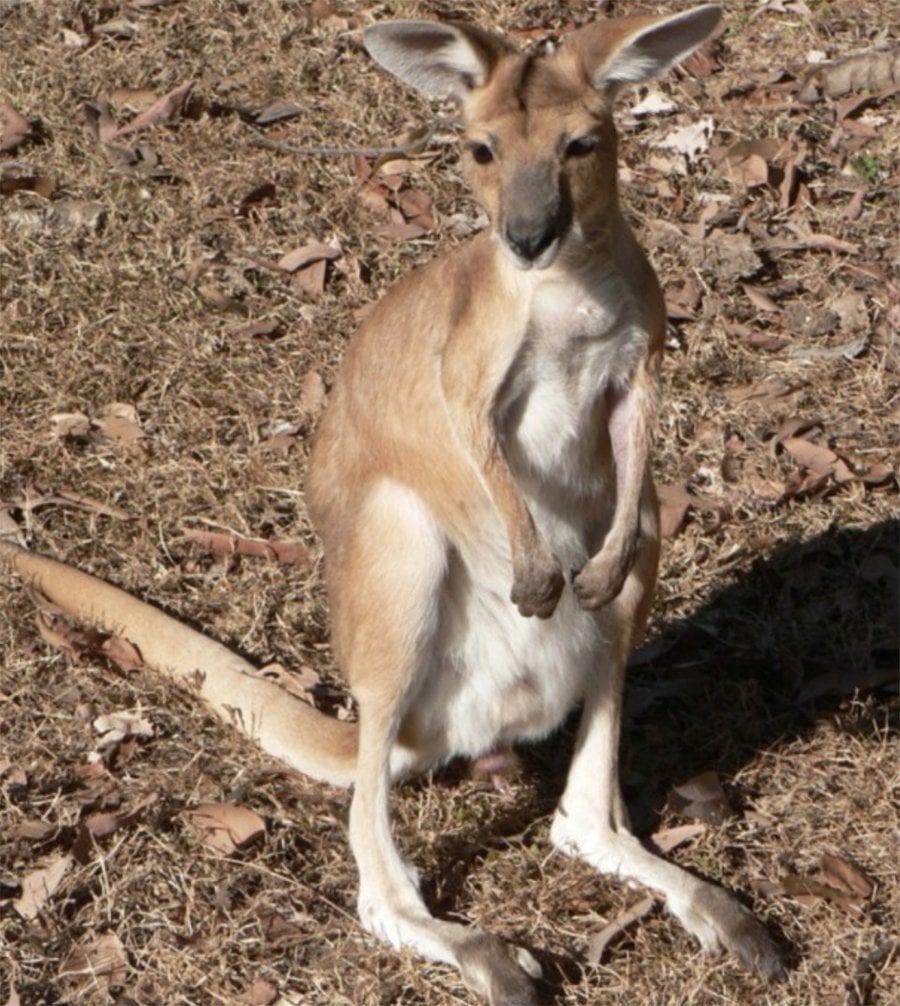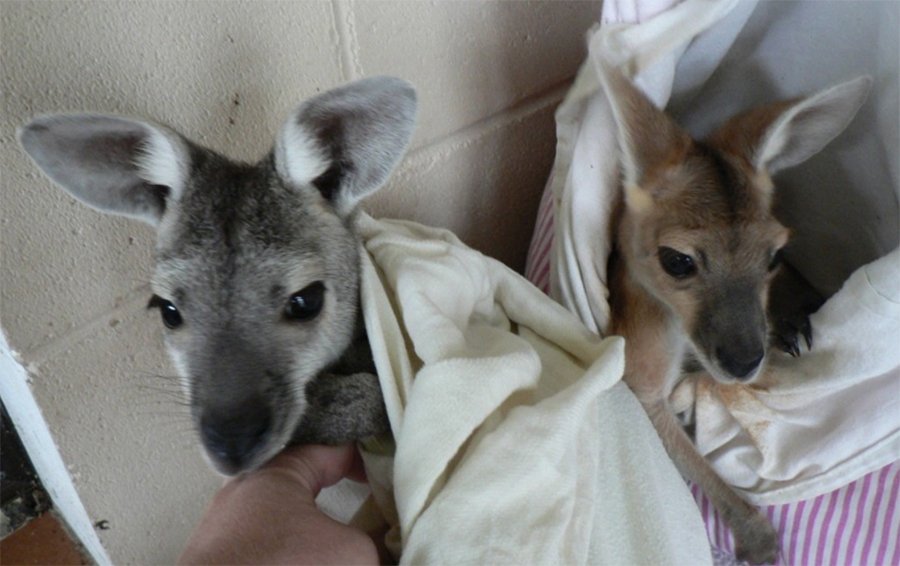The antilopine wallaroo is an accident-prone, toe-sucking eccentric

Bec Crew
Bec Crew

SPREAD ACORSS THE savannah woodlands of northern Australia, from the Kimberley to the Gulf of Carpentaria, and also up on Cape York Peninsula, the antilopine wallaroo is a mysterious species that even to this day has kept scientists guessing about its diet, biology, and breeding habits.
But what we do know is fascinating. Like the red and eastern grey kangaroos, the antilopine wallaroo is highly sexually dimorphic, which means it’s really easy to tell the difference between a male and female just by looking at them.
Adult males have a reddish tan coat that coordinates beautifully with their cream-coloured underbelly, and they have black-tipped paws and hind feet.
They also display a distinct swelling of the nose above the nostrils – a likely adaptation to help them pant in high temperatures.
Male antilopine wallaroos are thought to grow to as much as 70 kg, which is 2.5 times the weight of a Dalmatian.

(Image Credit: Sarah Hirst)
Females are typically three to four times smaller than the males, growing to just 15 to 30 kg as adults. Their coat is grey on the head and shoulders and brownish tan on the back and hindquarters.
And while they have the same black tips on their paws and hind feet and the cream undersides, they have distinct white tips on the back of their ears:
Antilopine wallaroos are very social animals, and display an unusual behaviour called sexual segregation, which sees them break off into single-sex groups during breeding season.
It’s not known exactly why they do this, but it could have something to do with the unique diet the females need when they’re reproducing, or it could be an anti-predator strategy.
There are three species of wallaroos in Australia (wallaroos are typically larger than wallabies but smaller than kangaroos) and the black and common wallaroos are solitary creatures.
The fact that the antilopine wallaroo likes to group up makes it weirdly kangaroo-like, which is why you might see scientists refer to it as an antilopine kangaroo.
These things are truly beautiful animals, but according to those who know them best, they’re awkward, blundering, and for some reason are quick to develop a chronic sucking behaviour that can seriously stunt their growth.
“In my experience, antilopine wallaroo joeys are incredibly clumsy (with a few that could even be described as dumb!) and therefore vulnerable to self-injury and a number of other problems,” Sarah Hirst, biodiversity liaison officer at the Territory Wildlife Park in Darwin, reports.
“Some of the more unbelievable happenings include joeys that routinely chase cars, some for several kilometres; and two separate incidents of joeys that jumped into the coals of an open campfire and singed their feet.”
Hirst has also noticed that, just like many humans, antilopine wallaroo joeys like to suck things if they’re hungry, or even as a type of ‘security blanket’.
The behaviour emerges in the pouch, and can be almost impossible to break if it’s retained into adulthood, and can lead to some rather poignant displays.
“The sight of an adult female sucking on the ear of her pouch joey is truly sad!” says Hirst.
“Another case is that of a three-year-old male that still sucks his toe. He is now only about half the size of his counterparts, and is also smaller than males a year younger.
This individual also regularly suffers bloat and colic-like symptoms from the intake of air to his gut during sucking.”
On a happier note, Hirst did get to experience antilopine wallaroo twins, which resulted in the most adorable picture ever, and also a perfect example of their sexual dimorphism:

(Image Credit: Sarah Hirst)
Maxi and Moppet grew up to be very beautiful (that’s Maxi in the full-length picture above), but even Elastoplast couldn’t stop Maxi from becoming a chronic toe-sucker.
Australia. We sure know how make them down here.




